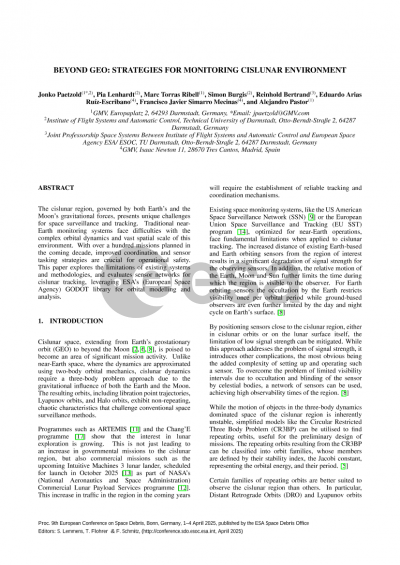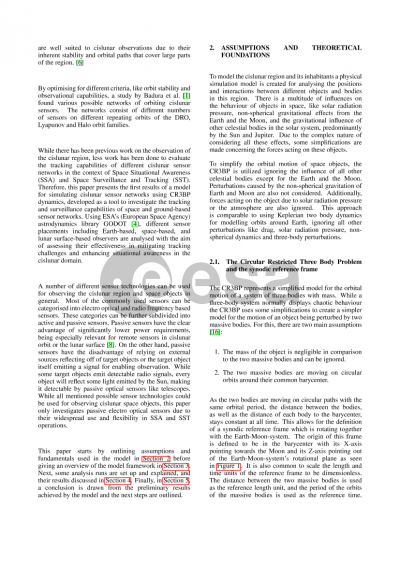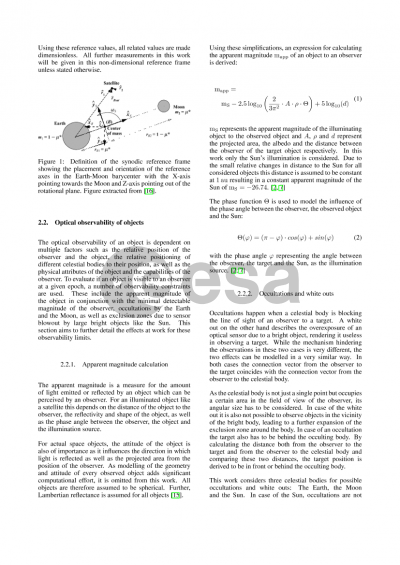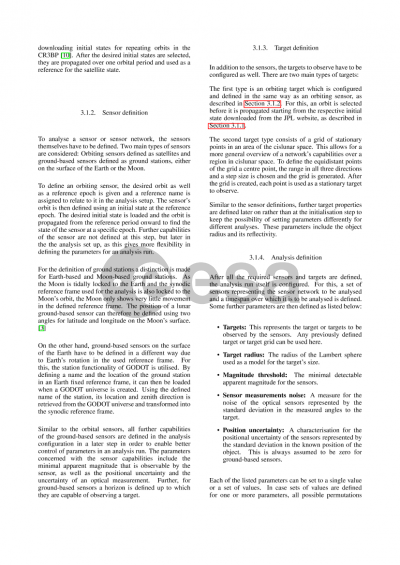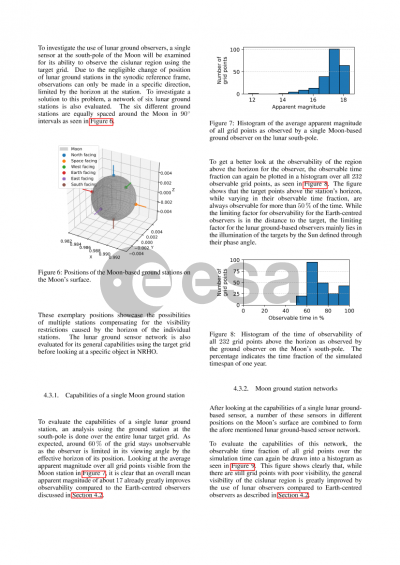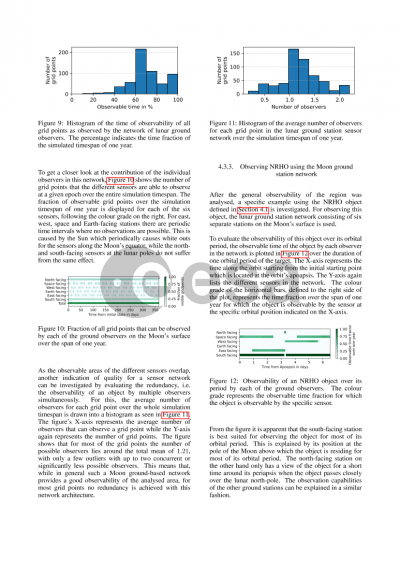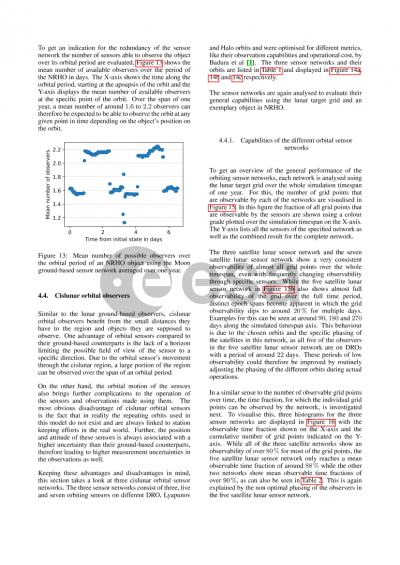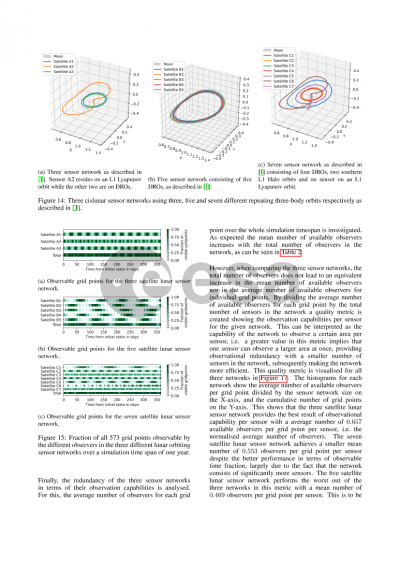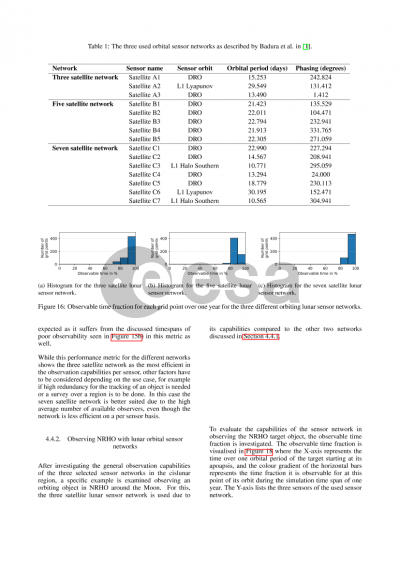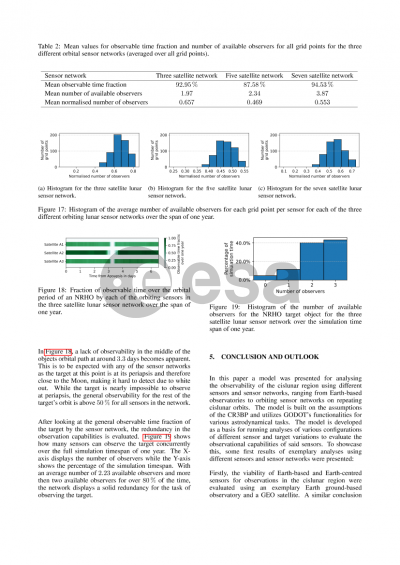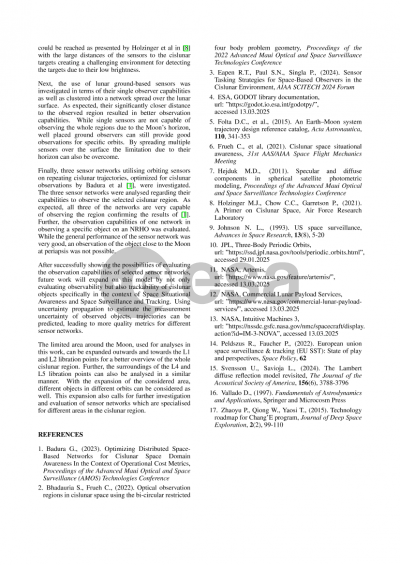Document details
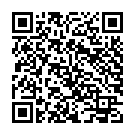
Abstract
The cislunar region, governed by both Earth's and Moon's gravitational forces, presents a complex area for orbital dynamics. Mastery of this area is crucial for adapting classical space surveillance and tracking, and space traffic coordination concepts to lunar missions, and for establishing enduring infrastructure and monitoring systems within this environment. Cislunar space extends from Earth's geosynchronous orbit to beyond the Moon. In this region, traditional two-body (Keplerian) orbital dynamics are insufficient due to the Moon's significant gravitational influence. Instead, a three-body problem approach, accounting for the Earth, Moon, and spacecraft, becomes essential. This results in complex, non-planar, and chaotic trajectories, with most orbits being non-repeating and significantly perturbed by the combined gravitational forces of the Earth and Moon. This environment is expected to experience a significant increase in mission activity, with more than one hundred missions planned over the next decade by both commercial and government actors. The anticipated missions range widely in purpose, from scientific research and lunar exploration to resource extraction and national security operations. This projected increase highlights the urgent need for improved coordination and monitoring capabilities to manage traffic and operational safety in cislunar space.
Currently, space environmental monitoring systems are optimized for near-Earth operations, focusing primarily on tracking objects up to geostationary orbit. While these systems are effective for monitoring spacecraft in the near-Earth environment, they face significant limitations when applied to the cislunar region. The large distances cause issues with signal latency and strength as well as tracking resolution at cislunar distances, where the extended spatial scale leads to increased delays and lower detection accuracy. Additionally, the multi-body dynamics produce complex orbits, such as libration points, Lyapunov orbits, Lissajous orbits, and various Halo orbits, making continuous and accurate tracking more difficult. The spatial scale of the cislunar region, which spans nearly ten times the distance from Earth to geostationary orbit, further complicates tracking efforts and requires advanced sensors with capabilities far beyond those used in near-Earth environments. This paper introduces these particularities of the cislunar environment and addresses the corresponding challenges with a particular focus on sensor tasking, space object tracking, conjunction detection, and collision avoidance. The analyses have been conducted using GODOT, ESA’s flight dynamics library, for orbital propagations, events computation, and other methods of astrodynamics.
Various strategies for space surveillance and tracking in cislunar space are explored through the study of different sensor network architectures and configurations. These configurations include not only Earth- and space-based sensors in Earth orbits but also sensors positioned in cislunar orbits and on the lunar surface. Proposed placements include locations at libration points, within Lyapunov, Lissajous, and Halo orbits, as well as in Moon-centered orbits. Observing and tracking these trajectories involves addressing significant challenges, mainly related to visibility and illumination conditions, influenced by the Moon's phases and the observation geometry, among others, leading to substantial visibility gaps.
Several drivers for the optimization of sensor tasking are considered in this work. First, the trackability of the cislunar space object population, including not only custody maintenance but also reliable trajectory prediction. Secondly, the provision of collision avoidance services, which is greatly affected by the quality of orbit determination and propagation. Thirdly, compliance with current and future space debris mitigation guidelines, which are required for the sustainable use of the cislunar space environment.
Preview
